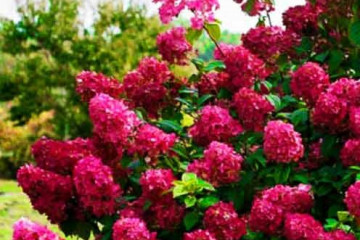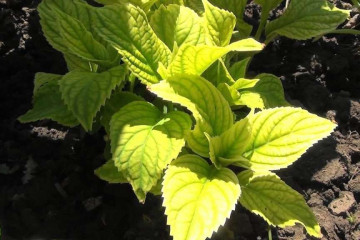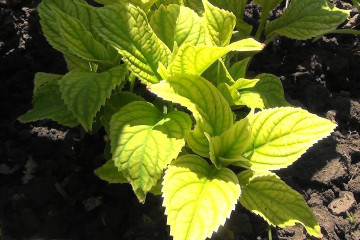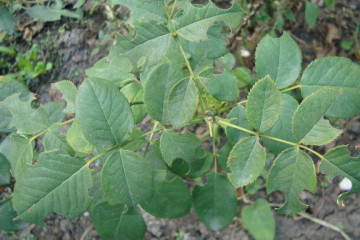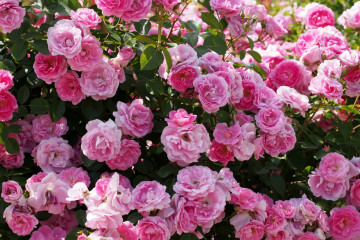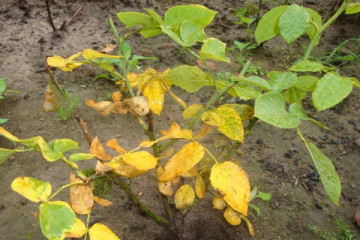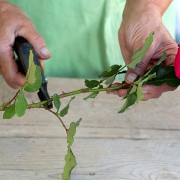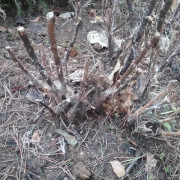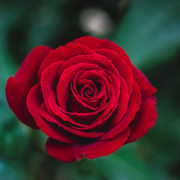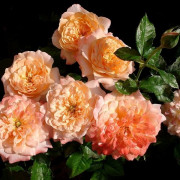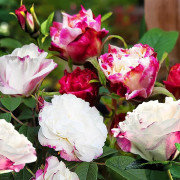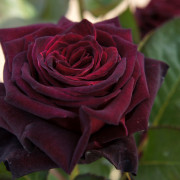Rose pale leaves - causes and how to treat
Content:
Rose leaves turn pale when the plant lacks iron, manganese, nitrogen, or other substances. This usually happens in the spring. The pale leaves of a rose, with which there were no problems before, can serve as a kind of warning about an incipient infectious disease or an invasion of garden pests.
Why do the leaves of a rose turn pale?
Rose leaves turn pale (covered with a whitish coating) for a number of reasons. It may seem to a novice gardener that the petals fade in the sun, but this is not so. The main cause is infections brought into the rose garden by wind, insects or animals.
At the height of the season, the rose bush can be attacked by spider mites, leafhoppers, aphids and other insects that love to feast on green foliage and flowers. Almost all garden parasites use plants as living incubators for their offspring.
What diseases cause the foliage of a rose to turn pale
Most often, rose bushes are annoyed by:
- powdery mildew (both real and false);
- chlorosis;
- gray rot
Powdery mildew is the result of too frequent fertilizing with nitrogen fertilizers or neglect of caring for the plant, in particular, for its crown. Powdery mildew is a big lover of summer heat and often appears on rose bushes planted in a well-lit area of the garden, open from all sides to the scorching summer sun. Excessive sun exposure, especially during the height of a hot day, can be detrimental to a rose.
A characteristic sign of the onset of the disease is a whitish coating that quickly spreads throughout the plant. At the next stage of the development of the disease, the foliage curls and deforms. The powdery coating changes in color over time and acquires a reddish-brown tint.
When a plant lacks iron, it develops chlorosis, which affects only young foliage. Infected foliage turns white and soon falls off. To cure chlorosis, flower growers inject iron-containing preparations into the root hole or use specially developed complex dressings.
Gray rot is a fungal infection. At the very beginning of development, the disease can be easily confused with powdery mildew due to the similarity of the primary symptoms. Subsequently, foliage affected by gray rot rot and fall off.
The ideal conditions for the emergence of gray rot are thick shade and damp air. If roses are planted too densely, the disease develops very quickly, the infection is transmitted from plant to plant.
Other reasons why leaves turn pale in rose bushes
Changing the color of foliage is associated not only with the characteristics of a particular disease. There are many reasons why foliage turns pale.
If the rose has small leaves, garden pests may be to blame.
The spider mite braids the outer part of the leaves with its secretions, from which the foliage turns pale and dies off. To drive away this pest, the leaves must be washed several times with acaricides (such as "Fitoverma") or just plain water.
Green aphids settle on a rose bush to feast on the sap of the plant. As a result of the actions of insects, the foliage turns pale, changes shape, and then brightens, the stems and buds of the plant are deformed. A soap solution will help the grower to get rid of aphids. All parts of rose bushes are subject to processing. Treatment with any insecticides will also be effective.
The leafhopper loves to feast on the foliage of the plant. Eating the pulp, the insect lays the larvae in the stems, which is why the leaves of the roses first turn yellow and then fly around. It is difficult to drive out leafhoppers, therefore experienced flower growers actively use preventive measures that interfere with the life of this category of pests. During autumn work, rose bushes are treated with insecticides, for example, Aktara has proven itself well.
Lack of micronutrients
Sometimes the plant lacks the substances necessary for normal development. The florist's task is to find out exactly what it is about. To come to any conclusion and understand what to do, you need to be guided by the appearance of the plant.
For example, if the roses lack nitrogen, the green foliage turns pale and takes on a light green hue. An excess of nitrogen can cause gray rot.
When a plant lacks manganese, this is immediately reflected in the condition of the old leaves. They turn yellow.
The lack of potassium manifests itself in the form of a red tint on the delicate green young foliage of the plant. Old leaves turn yellow. The flowers of a plant that needs potassium grow less than usual and stand out disadvantageously against the background of healthy flowers.
If the plant lacks magnesium, the areas of the leaves between the veins turn yellow. The veins themselves do not change in color.
Sometimes a whitish coating is a sign of sulfur deficiency. In this case, the rose must be fed with organic fertilizers saturated with colloidal sulfur.
Leaves turned pale: what a gardener should do
Before starting to act, the gardener must determine what kind of trouble befell the rose bush, why the rose has pale leaves. The method of treatment and dosage of medicinal substances depend on the circumstances of the onset of the disease.
How and what to treat
Powdery mildew treatment consists of removing and burning all affected shoots and foliage. The surviving part of the bush is sprayed with infusion of nettle and horsetail or soapy water mixed with copper sulfate.
Gray rot is afraid of Bordeaux liquid, "Fundazole" (dissolves in water according to the dosage indicated on the package) and horsetail tincture.
Having been chosen by insects, the rose is forced to feed both the parasites themselves and their offspring. Therefore, the fight against garden pests is reduced to insecticide treatment.
Disease prevention
Preventive measures are appropriate only if the plant is not yet infected and has not become the object of attention of pests.
How to feed plants properly
With a lack of nitrogen, the situation can be saved by feeding the rose with ammonium nitrate.
To replenish manganese reserves, it is necessary to increase the acidity of the soil - to mulch the root space with needles, and then treat it with manganese sulfate.
You can eliminate the phosphorus deficiency by dressing from a superphosphate solution or complex fertilizers.
Potassium reserves can be replenished with potassium sulfate fertilizers and compound fertilizers.
Magnesium sulfate and all supplements containing it will help to fill the lack of magnesium.Ash has no less effect.
The correct watering regime for roses
Roses love abundant watering - at least a bucket of water must be poured under one bush. 2-3 days after water procedures, the near-trunk space is loosened to ensure aeration of the root system. In the autumn, the amount of water intended for irrigation is reduced to reduce the likelihood of fungal infections.
Finding out why a rose has light green leaves is quite difficult. Having planted a rose bush in an inappropriate place, damp and inaccessible to sunlight, or vice versa, on a constantly illuminated edge of a land plot, an ill-informed gardener wonders why the rose buds are shrinking and the shape of the leaves changes, not realizing that he himself has doomed the plant to disease and death.
Almost always, pale leaves of a rose are an indicator of a lack of minerals or beginning infectious diseases.





